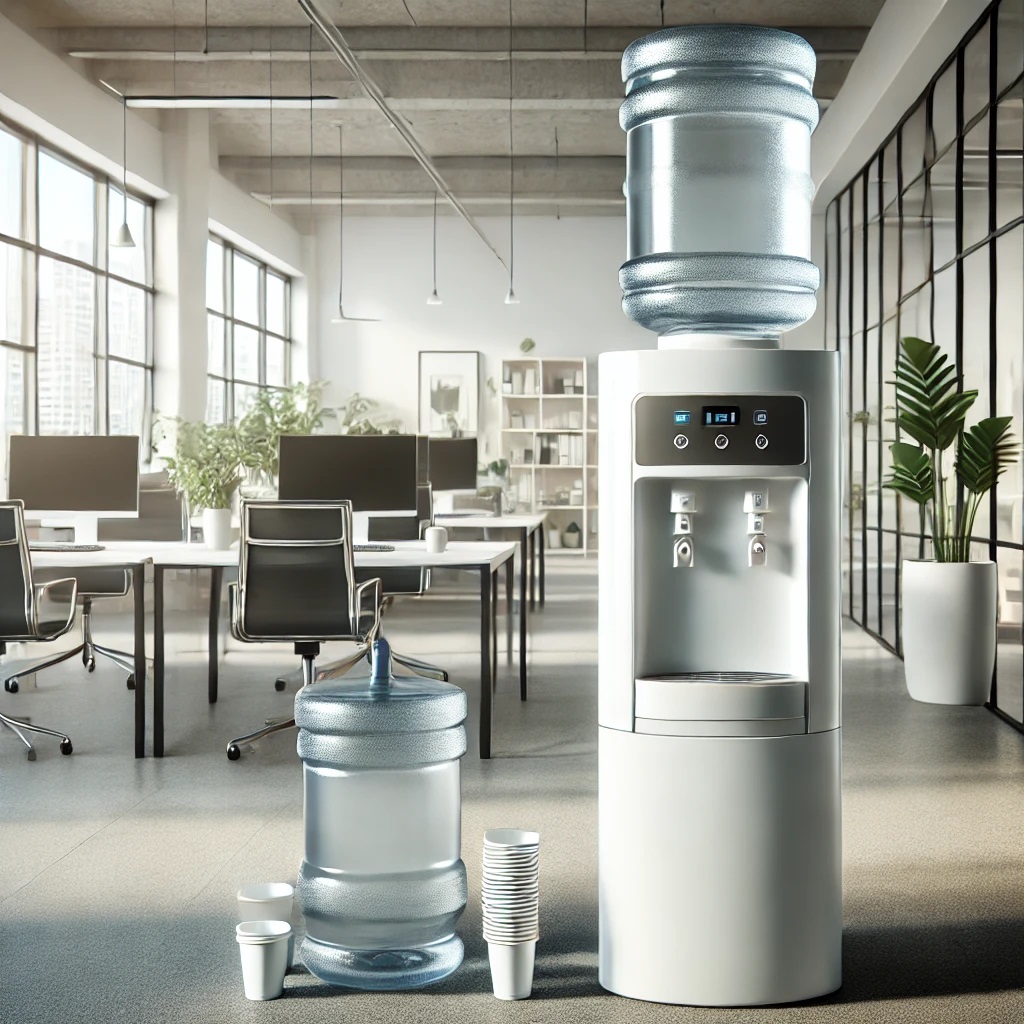
Introduction:
A water cooler dispenser is a device that provides cold, hot, or room-temperature water at the push of a button. Typically, these machines are found in workplaces, homes, and public spaces, ensuring that users have immediate access to drinking water. water cooler dispenser come in two main types: bottled water coolers and point-of-use (POU) systems that connect directly to a water supply.
Water dispensers use simple yet effective mechanisms to deliver water at various temperatures, depending on the model. The device may have a cooling mechanism, a heating element, or both, allowing the user to choose between cold, hot, or ambient water.
Types of Water Cooler Dispensers
- Bottled Water Coolers: These models require large water jugs (typically 5 gallons) placed upside down into the unit. The water flows downwards due to gravity, which is then cooled or heated inside the machine.
- Point-of-Use (POU) Coolers: Connected directly to the building’s water supply, POU water dispensers eliminate the need for water jugs. They are fitted with advanced filtration systems to ensure that water is clean and safe for consumption.
How Does a Water Cooler Dispenser Work?
1. Cooling Process
Most water dispensers have a refrigeration unit that cools the water before dispensing. When the user presses the cold-water button, water is directed from the internal reservoir into a cooling chamber. This chamber contains a cooling coil powered by electricity. As water passes through the coil, it absorbs the cold temperature, ensuring a refreshing drink.
Some units use thermoelectric cooling, which involves a heat exchange process using Peltier elements. This method is more energy-efficient but may cool water at a slower rate compared to compressor-based systems.
2. Heating Process
Water dispensers that provide hot water are equipped with an internal heating element. When you press the hot water button, water from the reservoir flows through a coil that rapidly heats it, providing water hot enough for making tea, coffee, or instant soups.
The water temperature is typically maintained between 185°F and 200°F, ensuring it’s suitable for hot drinks. The heating mechanism only activates when the hot water is requested, preventing unnecessary energy consumption.
3. Dispensing Mechanism
Water dispensers use gravity or pumps to deliver water to the user. In bottled water coolers, gravity is the key mechanism as the water jug is inverted, allowing water to flow naturally into the reservoir when dispensed. For POU coolers, electric pumps are often employed to maintain a steady flow from the water supply to the cooling and heating chambers.
4. Filtration and Purification
POU water dispensers often come equipped with filtration systems to remove impurities from the tap water. These systems may use activated carbon filters, UV light, or reverse osmosis to ensure the water is clean and safe for consumption. Some advanced models also include mineralization systems that add beneficial minerals back into the water.
5. Temperature Control
Water cooler dispensers maintain a consistent temperature by using thermostats that automatically regulate heating and cooling. When the water in the reservoir reaches a specific temperature, the cooling or heating process temporarily halts to prevent overuse of energy. Once the temperature rises or drops beyond the set point, the system reactivates.
6. Energy Usage
Water dispensers are energy-efficient devices, though the power consumption varies depending on the features available (e.g., cooling, heating, filtration). Standby mode ensures that the system is not using unnecessary power when water is not being dispensed.
Benefits of Using a Water Cooler Dispenser
- Convenience: Provides easy access to cold or hot water instantly, without the need for boiling or refrigeration.
- Cost-Effective: Point-of-use dispensers eliminate the need to buy bottled water, saving money in the long run.
- Healthier Water: Advanced filtration systems in POU coolers ensure the water is free from contaminants.
- Encourages Hydration: Having readily available water encourages people to drink more, improving overall health and well-being.
- Eco-Friendly: By reducing plastic waste from single-use water bottles, POU coolers are a more environmentally friendly option.
Conclusion
Water cooler dispensers are essential appliances that provide clean, temperature-controlled water with minimal effort. Whether you’re using a bottled water cooler or a point-of-use system, understanding how these machines operate can help in maintaining them properly and making an informed choice when selecting one for your home or office. With various types of coolers available, you can select one that fits your specific needs, ensuring that you always have access to fresh, clean drinking water.
FAQs
1. How often should I clean my water cooler dispenser?
It is recommended to clean your water cooler dispenser every 6 to 8 weeks to prevent bacterial growth and ensure the water remains clean.
2. Do I need a special filter for my point-of-use water cooler?
Yes, most point-of-use dispensers come with filters that need to be replaced regularly. The type of filter you need depends on your dispenser’s filtration system (e.g., activated carbon, reverse osmosis).
3. Can I use any type of water in a bottled water cooler?
It is best to use water from a reputable source. Most water cooler systems are designed to accommodate standard 5-gallon water jugs sold commercially.
4. How much electricity does a water cooler use?
Water coolers are generally energy-efficient. On average, they use about 100-200 watts, depending on whether the model provides both heating and cooling functions.
5. Is hot water from a dispenser safe to drink?
Yes, the hot water is safe to drink as it is heated to temperatures that kill bacteria, making it perfect for hot beverages like tea or coffee.
